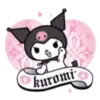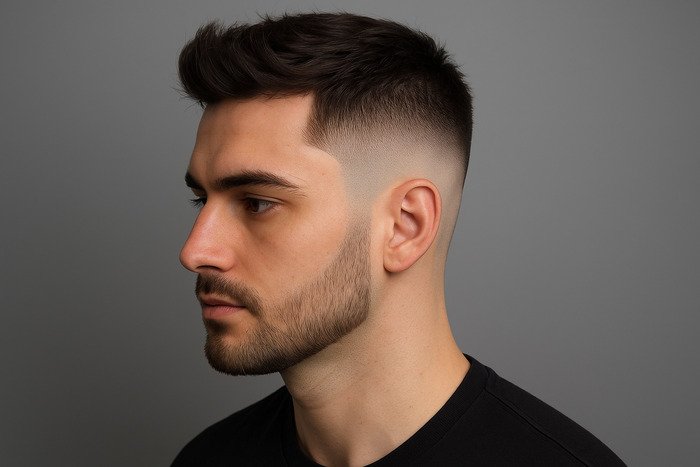The fade haircut has stood the test of time, evolving from military barracks to barbershop staples across the globe. This guide explores the different types of fade haircuts, how to choose the right one for your hair type and face shape, plus practical styling and maintenance tips for a clean, polished look.
Introduction to Fade Haircuts
The fade haircut isn’t just a passing trend, it’s a grooming essential that blends precision, style, and versatility. Whether you’re after a polished professional appearance or a sharp, edgy vibe, the fade delivers. With countless variations tailored for different hair textures and lifestyles, there’s a fade style for virtually everyone.
Barbers originally developed the fade within military and urban communities, but today it’s a global phenomenon. Thanks to its clean transitions and customizable levels, the fade has become a foundation for many modern hairstyles.
What Is a Fade Haircut?
At its core, a fade haircut gradually transitions from short or shaved sides to longer hair on top. The fade involves blending hair lengths seamlessly with clippers, often beginning at the neckline and moving up toward the crown. What sets it apart from other short hairstyles is the tapering effect, which can range from subtle to dramatic.
This haircut is known for its low maintenance, high impact look, especially when shaped to match your unique hair type and facial structure.
Different Types of Fade Haircuts
Low Fade Haircut
A low fade starts just above the ears and dips behind the head, creating a subtle transition. It’s perfect for beginners or professionals who want a clean style without going too bold. It works great with both casual and business settings.
Mid Fade Haircut
A mid fade begins around the temples and provides a balanced contrast between the top and sides. It’s a popular choice for men who want something noticeable but not extreme.
High Fade Haircut
The high fade starts high on the scalp and offers a striking, edgy appearance. It’s often paired with bold styles on top like afros, pompadours, or slick backs.
Skin Fade (Bald Fade)
This version fades all the way down to the skin. The skin fade offers a sharp, modern finish and pairs well with tight curls, buzz cuts, or textured tops.
Drop Fade Haircut
A drop fade curves with the shape of the head, “dropping” behind the ears for a more natural arc. It’s a favorite for enhancing the silhouette of the head, especially in styles like comb overs or curly tops.
Burst Fade Haircut
Popularized by mohawk and mullet variations, the burst fade creates a semicircle around the ear, fading into the nape. It’s trendy and artistic, ideal for those who want to make a statement.
Taper Fade Haircut
A taper fade is the most classic version, gradually fading near the neckline and sideburns. It’s subtle and versatile, suitable for school kids, business professionals, and everyone in between.
4. Choosing the Right Fade for Your Hair Type
Your hair type plays a key role in how a fade haircut will look and perform over time. Here’s how different textures pair with this style:
- Straight Hair: Works well with high fades and comb-over styles. Sharp lines and clean fades show up clearly.
- Wavy Hair: Wavy textures benefit from mid or drop fades, which blend movement with structure.
- Curly Hair: Tighter curls look excellent with low or skin fades, giving a defined top with clean sides.
- Coily/Kinky Hair: High fades and burst fades offer definition and contrast while taming the sides.
- Thick Hair: Can handle dramatic fades like high or bald fades without looking too sparse.
- Thin Hair: Taper or low fades help maintain volume and natural density at the top.
5. Fade Haircuts for Different Age Groups
Fade haircuts are not age-restricted, they’re adaptable across generations:
- Kids: Taper fades or low fades with textured tops are popular for school-ready looks.
- Teens: Trendier options like burst fades or mid fades with design elements are ideal for self-expression.
- Adults: High fades or skin fades pair well with beards, business attire, or casual styling for a sharp, confident look.
- Seniors: Classic taper fades offer a neat, age-appropriate finish that complements thinning hair.
6. Styling and Maintenance Tips
Keeping your fade fresh doesn’t require salon visits every week, but it does demand some upkeep:
Styling Tips
- Use lightweight pomade or matte clay for structured looks.
- For curls, apply leave-in conditioner or curl cream to maintain definition.
- A wide-tooth comb helps with textured tops, while a fine comb is best for sleek styles.
Maintenance Tips
- Visit the barber every 2–3 weeks to keep the fade clean.
- Use a trimmer for at-home touch-ups around the neckline.
- Moisturize your scalp, especially with skin fades, to prevent dryness or irritation.
7. Common Fade Haircut Combos
Fades often act as a base for combining with other trendy haircuts:
- Fade with Beard: Blends facial hair with your haircut seamlessly.
- Fade with Pompadour: Combines retro volume with modern sides.
- Fade with Curly Top: Lets natural curls shine on top with a defined structure.
- Fringe Taper Fade: Adds forward fringe for a youthful, high-fashion touch.
- Dreadlocks + Fade: Sharp fade sides highlight long locs or twists.
8. Mistakes to Avoid When Getting a Fade
Even a great fade can go wrong if you’re not careful. Avoid these common errors:
- Picking the wrong fade level: Match it to your lifestyle and hair type.
- Skipping trims: Letting it grow too long kills the clean, crisp look.
- Overusing product: Heavy styling products can weigh down natural texture.
- DIY without skill: Fading requires technique—leave complex fades to the professionals.
9. Final Thoughts
The fade haircut Styles has earned its place as one of the most iconic and versatile haircuts of all time. It suits all ages, hair types, and lifestyles. Whether you’re getting a low-key taper for work or a skin fade for style points, this cut can elevate your grooming game to the next level.
Ready to switch up your look? Don’t be afraid to experiment with fade styles, you might just find your signature haircut.
Want more hairstyle tips? Check out our related guide on the Fade Haircut to understand how your hair type plays a key role in how a taper fade will look and perform over time.

